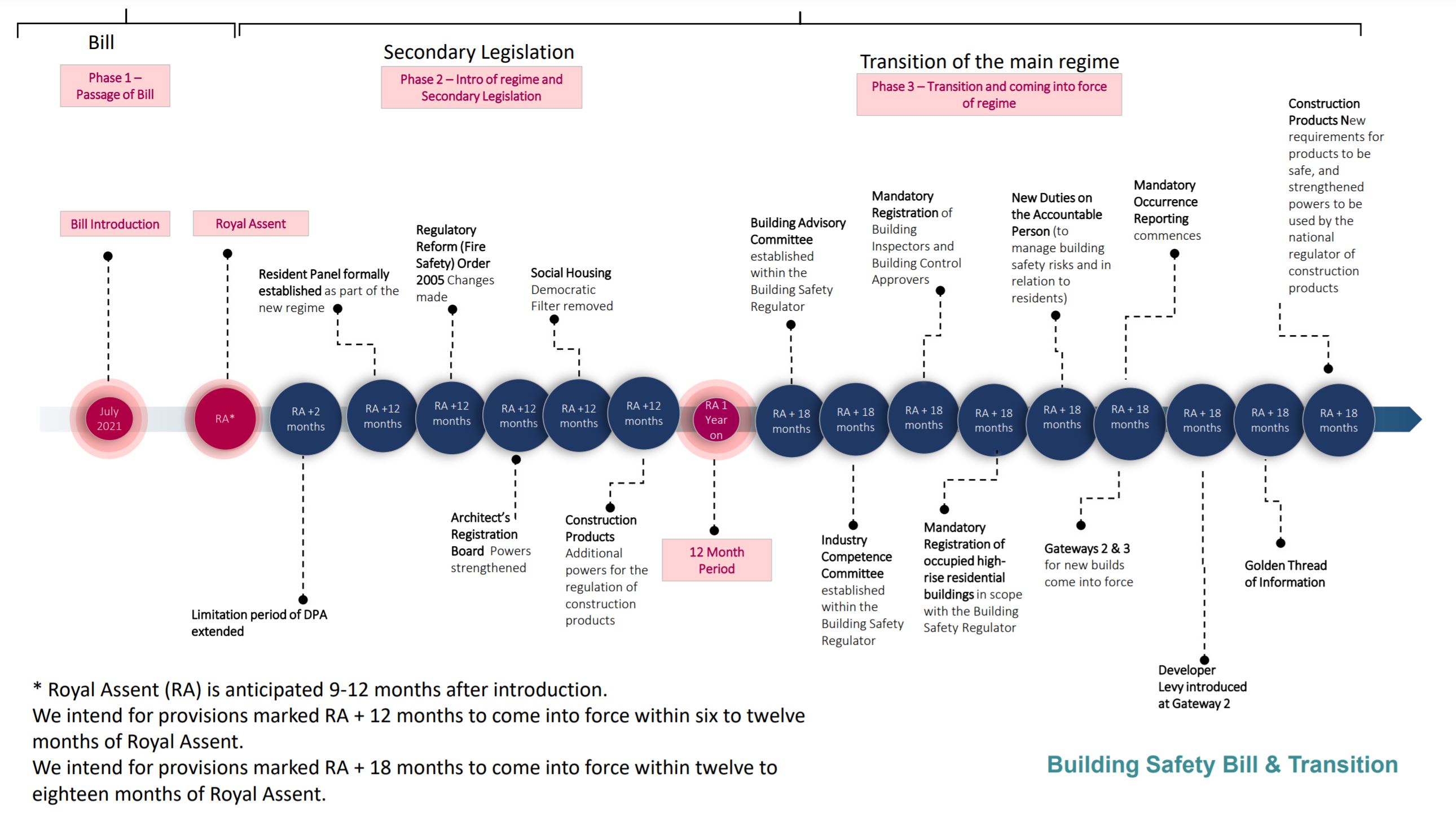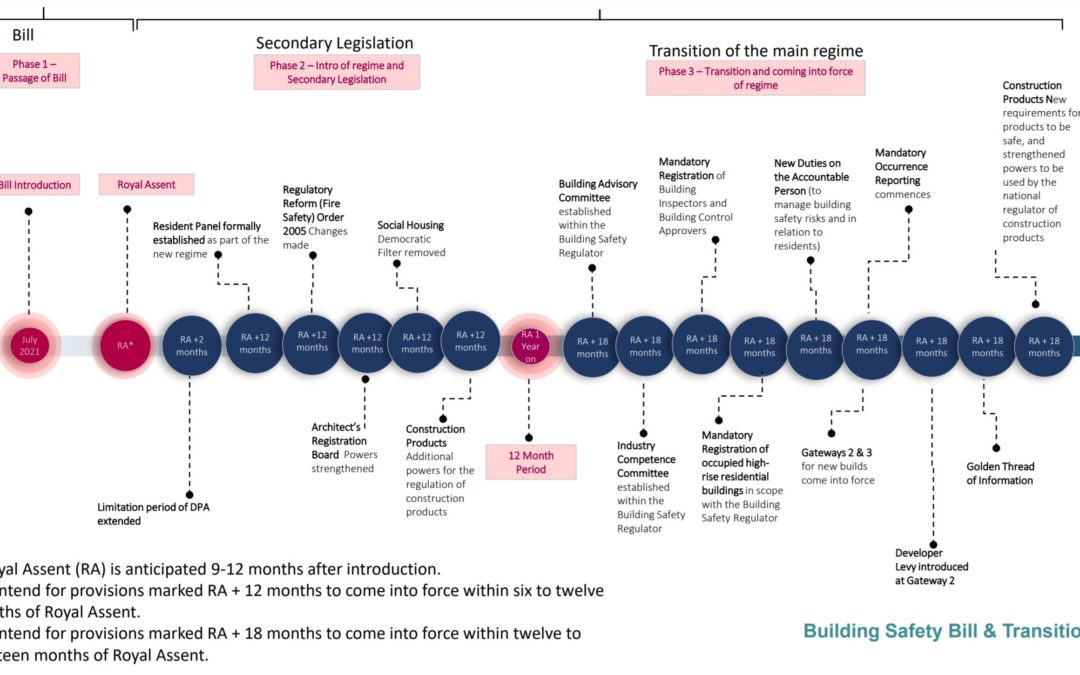FIS Statement on the Building Safety Bill
The main impact of the Building Safety Bill centres on who and how the building process will be regulated and who is accountable for what. It is, for the most part, a huge improvement to the regulatory landscape and will, without question drive a healthier culture centred on improvements in the exchange of information, better design and specification, considered procurement and ensure key details are decided before we are stood on site, scratching heads. An area of concern is, however, the accompanying changes to the Defective Premises Act and particularly the intent for retrospective application which potentially places a significant and disproportionate burden on contractors and suppliers.
The Building Safety Bill – Headline Changes
The Bill will see the implementation of specific gateway points at design, construction and completion phases to ensure that safety is considered at each and every stage of a building’s construction, and safety risks are considered at the earliest stage of the planning process.
It also focusses on key roles for individuals during the design, build and occupation of a high-rise residential building. These roles come with clearly defined accountability and responsibility.
Two new regulators are being created through the Bill. The Building Safety Regulator will be holding individuals to account and taking enforcement action when required. It also defines the role of the Construction Products Regulator in providing oversight for testing and control of the supply of construction products and sets the ground for the n Building
Other key areas covered by the Bill include:
- Building Safety Risks defined as fire spread (one flat to another or one floor to another) and structural failure.
- High Risk Buildings defined as those that are at least 18m in height or have at least 7 storeys and have at least two residential units (a dwelling, flat bedroom in a hall of residence or any other unit of living accommodation)
- This brings into scope care homes and hospitals meeting the same height threshold during design and construction
- It also brings into scope buildings owned or occupied by the Crown which meet the scope criteria e.g. Crown Estates, Duchy of Lancaster or Duchy of Cornwall or Government Departments. This is in line with the Fire Safety Order and Health and Safety at Work Act which applies to Crown buildings
- Draft secondary legislation sets out technical definitions, excludes certain buildings from the regime and, for design and construction purposes, defines the use criteria for a building to be covered.
- Secondary legislation is also drafted to confirm height will be measured from ground level on the lowest side of the building to the floor surface of the top storey (which does not exclusively contain roof-top machinery or a plant room)
- New powers for the Secretary of State to use secondary legislation to amend definitions written in the Bill
- Introduction of a new developer tax a levy on developers ”to ensure that the industry makes a contribution to setting things right”.
Areas of concerns – Retrospective extension of the Defective Premises Act (DPA) 1972
Whilst there are many reasons to applaud the introduction of the Building Safety Bill and the positive impact it is undoubtedly going to have on the construction process going forward, our applause missed a beat when we read and absorbed the impact of section 125 related to the extension of the Defective Premises Act (DPA) 1972. You may not be familiar with this particular piece of legislation, but it is where the 6 year liability related to claims against defective works is rooted.
The phrase: “Where by virtue of a relevant provision a person becomes entitled to bring an action against any other person, no action may be brought after the expiration of 15 years from the date on which the right of action accrued.” has massive implications for the construction sector moving forwards, but our main concern is when combined the commentary from Robert Jenwick that made it clear that the intention will be for changes to apply retrospectively, allowing claims from 2010.
The wording also indicates that this claims window would be applicable to all “relevant building” effectively extending the scope of the DPA away from new premises to cover all refurbishment and renovation work.
Should this Bill pass through Parliament unamended, clients bringing claims based on workmanship issues from 2010 in “relevant buildings” would have a 15 year window (way beyond existing typical contractual defect liability terms) to bring a claim against the contractor.
Timescales for the Building Safety Bill
The Building Safety Bill is not law yet, it was introduced into Parliament on 30 June 2021 and the process of scrutiny by Commons and Lords is expected to take no less than 9 months at which point Royal Assent will be granted.. The timescales below give insight into when and how the various elements are anticipated to come to bear.
FIS is currently seeking clarification on the changes to the DPA (an initial view has been provided here as part of a SpecFinish article by Michael Woolley, Legal Director of Hill Dickinson LLP. We remain concerned that the Building Safety Fund and various cladding and remediation and support do not adequately address legacy issues. The legal requirement for building owners to prove that they have explored alternative ways to meet remediation costs before passing these onto leaseholders means that we are also likely to see surveyors commissioned to find problems, actively seeking to find ways to impose the cost on contractors as an easier route than addressing poor procurement and failings in the regulatory environment.
We will continue our work with the wider construction sector in representing the views of our members on this matter and will be raising these concerns through the Civil Service and relevant Politicians over the coming months.
Building Safety Bill documents
- Building Safety Bill: important documents
- Building Safety Bill: Government response to pre-legislative scrutiny by the Select Committee
- Building Safety Bill: draft regulations
- Building Safety Bill: transition plan
- Building Safety Bill: factsheets
FIS hosted an update and debate on the introduction of the Building Safety Bill in October 2020 – you can access a recording of the event here
View the original announcement of the Building Safety Bill here.

